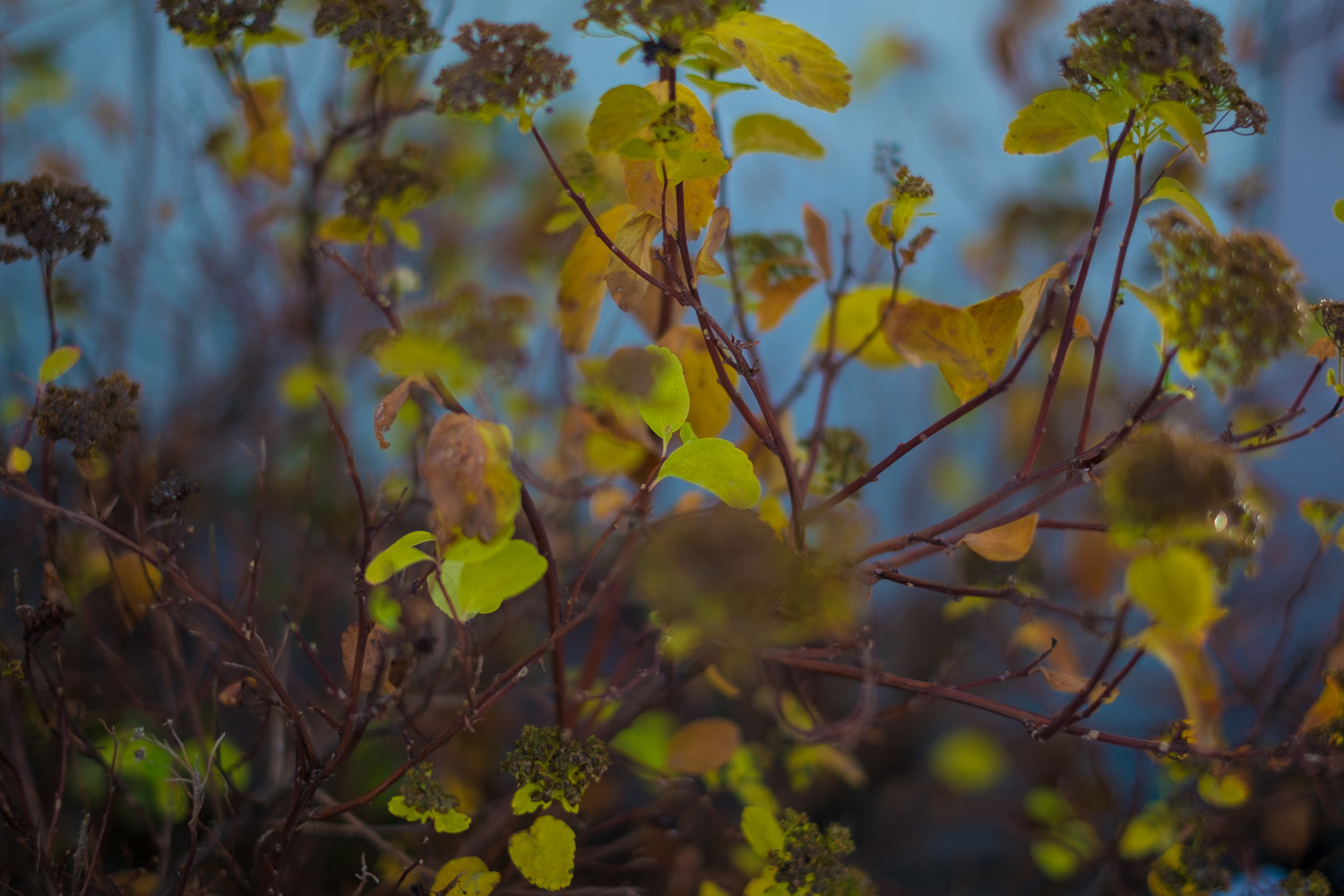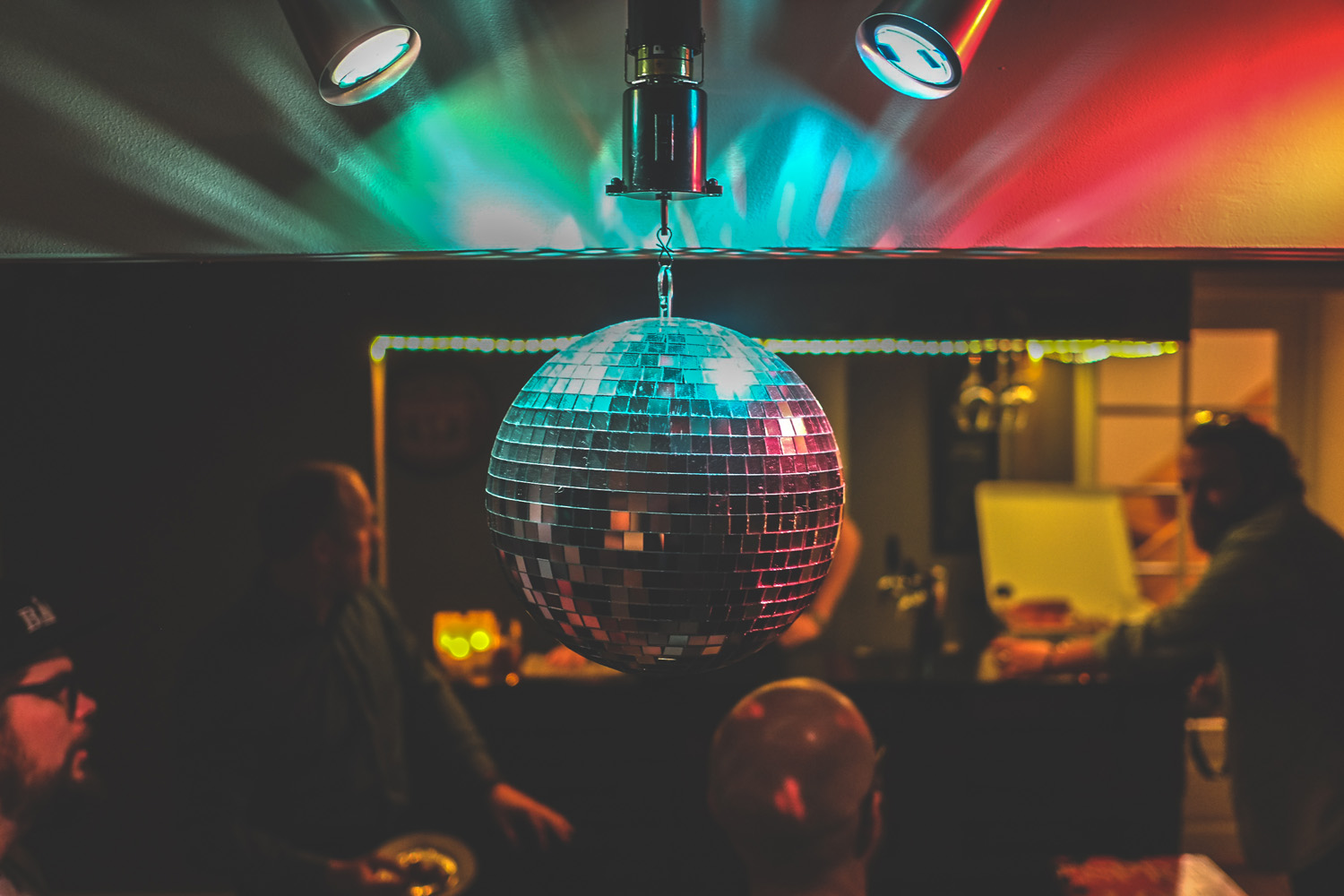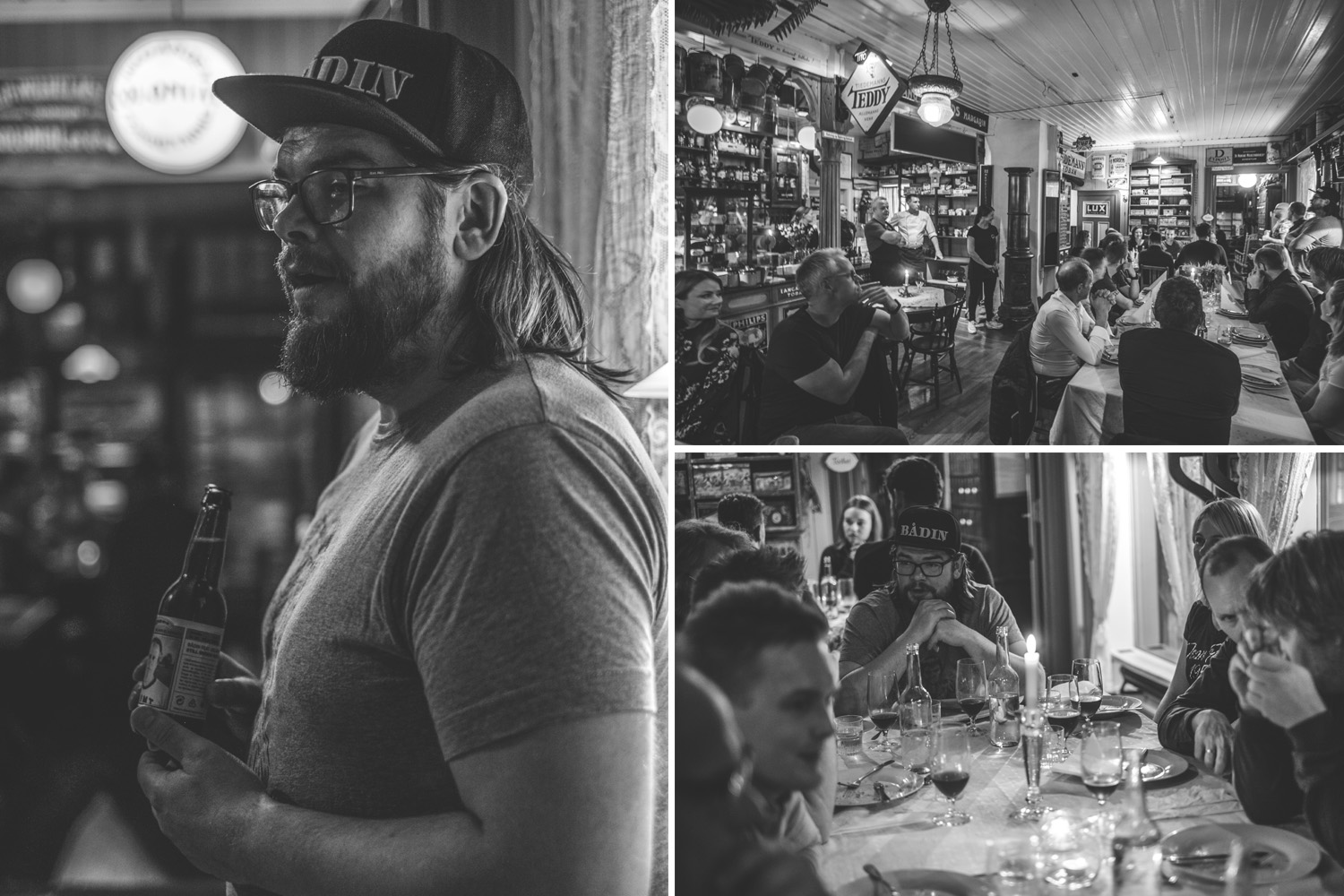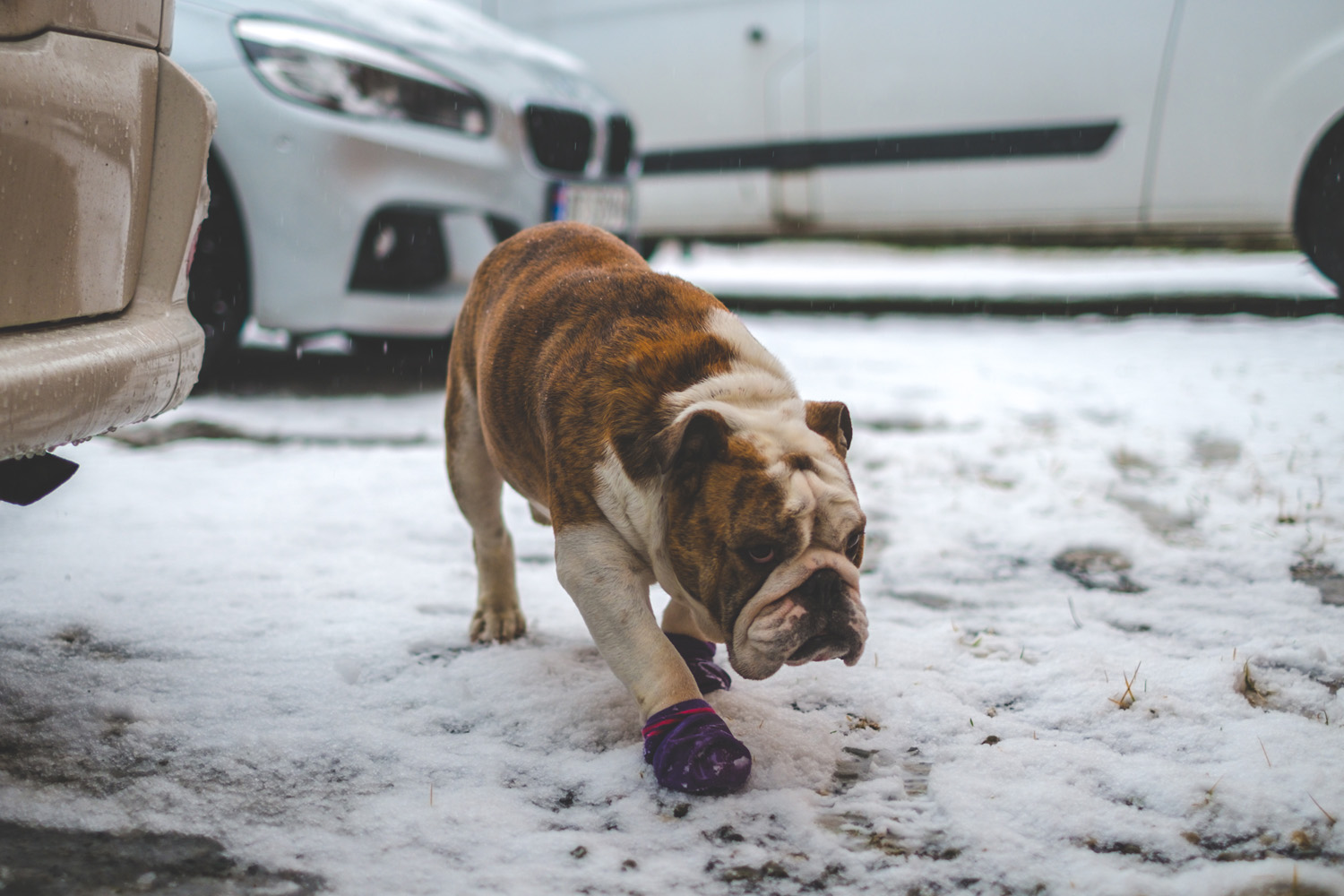It’s late October, and the icy streets of Mosjøen are completely still, save for a billow of steam rising from every other house, making its way toward the snowy peaks of the fjords. It’s also late in the evening, and from the balcony of his home a mile or so out of town, Espen Olson Reines points down into the valley at the houses he knows will be brewing in the morning.
“That one, that one, that one,” he says, pausing for a moment to consider. “Oh, and that one.”
Mosjøen is a sleepy coastal town on the edge of the Arctic Circle in Norway, surrounded by glassy water and steep hills that disappear into the clouds. Wandering around the ancient wooden houses and misty roads, it feels a little eerie, like the aftermath of a horror movie’s climactic scene. In these temperatures, a lot of the living happens behind closed doors in warm cafés and bars.
Unfortunately, Norway’s government is not exactly fond of alcohol. It enforces the second-highest tax rate in the world, and has made it illegal to advertise or sell anything over 4.7% to-go outside government-controlled shops. That doesn’t faze the Norwegians, though. They’re a practical, no-nonsense people, and if they can’t buy it, they just make it themselves. That means Norway’s homebrewing scene is like nowhere else on earth. And that’s why I’m here.
Reines and I are sharing a quiet moment at the after-party of the town’s homebrew competition and festival, which he organizes. Things are getting a little philosophical because, well, we’ve been drinking since lunchtime. We’ve just spent a half hour kneeling on the floor in front of his new sound system, listening to Nordic heavy metal at a volume I was sure would echo across the fjords and all the way back to my home in England.
“I once met Jónsi of Sigur Rós,” I tell him. “He said that the reason Iceland has such a fantastic music scene is that it’s dark half the year and the kids have nothing to do except play music in their garages. Does the same apply here but with beer?”
Reines laughs. “Yes, that’s probably true. But it’s building a community, too. It used to be, when you met someone in a bar and got talking, it was because you needed a light or something. Now, you ask, ‘What are you drinking?’ And then, ‘What are you brewing?’”
“Here in Mosjøen, we don’t get that many international beers, so we have to make them ourselves. I’ve made a Heady Topper clone.”
Mosjøen seems to center itself around its food and homebrew scene. The annual beer festival is one of the most anticipated events of the year in the town, but I wanted to see the people and places behind it, too. After all, your homebrew setup says a lot about you. Faced with the prospect of a homebrewery crawl, Reines was only too happy to oblige, and so were a few of his friends.
Five of us squeeze into Reines’ hatchback, and hurried, awkward introductions are made. Among the passengers there’s a giant, bearded man named Andreas Myrvold, head brewer at Bådin Brewery a few hundred miles north. Tonight, Reines tells us, we’re going to the best restaurant in town, Vikgarden, for a beer dinner hosted by Myrvold himself. It turns out he’s very excited to show off his Saison next to Vikgarden’s cod cheeks.
Hurtling back up the side of the fjord, we leave Mosjøen’s old waterfront behind for modern family homes. Every house looks different, built across as many floors as the gradient would allow, and soon, even Reines is lost. We’re looking for his friend Gaer Almås’ house, but everywhere looks the same to me. It’s raining sideways, so he sends Myrvold to the door he thinks is Gaer Almås’. Seconds later, Andreas the Giant lumbers back looking sheepish.
“The lady who owns that house looks like she was expecting someone, but it definitely wasn’t me.”
We finally find Almås’ house and are taken down to a dingy basement boasting its own bar, lit by saloon lamps. He assumes barman, pours us his kegged ESB (which is very Americanized with lots of caramalt and citrus notes), and then unexpectedly leads us into the bathroom. Confused, we’re hurried through a second door next to the toilet, where thankfully we find his brewhouse.
You can tell Almås is an engineer. Vessel lids have wall hangers, tools are stuck to magnetic strips on the wall, and the place is spotless. He speaks at a hundred miles an hour, taking tiny breaths as he talks us through his binder of recipes and homemade three-vessel HERMS setup. It’s a sophisticated way to homebrew, but the kit still has a rustic look to it.
“The plan was to have it fully automated,” he says. “So I bought and installed all the equipment. But I didn’t need to watch temperatures or use my hands anymore. It took the fun out of brewing, so I ripped it all out.”
“I’m very critical of my own beers. I think every brewer is. But I knew, of course, when I tasted this one the first time that it might be a winner. ”
We head back to the bar to sample his Apricot Wit. It’s a touch too dry, but has a gorgeous, soft fruit aroma. Thanking Almås for the hospitality, we make our excuses and head to our next appointment, dinner pre-drinks with another homebrewer, Truls Bardal.
Bardal’s house couldn’t be more different than Almås’. It’s open and airy, bright with IKEA-like pine. His kitchen has a huge corner fridge filled with a ridiculous amount of food—and even more beer. Six homebrew kegs (!!!) stand at attention on the bottom shelf, each with a python and trigger to pour. Oddly, he has an Apricot Wit on, too, and his is more full-bodied and zesty, truer to the way the Belgians like it. Four beers in, and none have suffered from the classic failures of homebrewing—vegetal hops, oxidation, under-fermenting, over-priming.
We head out to his garage, where he has to back his car up to get to his Braumeister and small, stainless steel fermenter. We try a soft, piney, and resinous American Pale Ale that instantly takes me back to the hours spent supping at Russian River’s brewpub. Like Blind Pig, it’s so clean and dialed-in you can almost taste the minerality of the water. But as I’m gushing at him, I realize Bardal has no clue what I’m talking about.
“Here in Mosjøen, we don’t get that many international beers, so we have to make them ourselves,” he laments. “We read about different beers and styles to try and make our own. I’ve made a Heady Topper clone, for example.”
“How close did you get?” I ask, before realizing again that, well, yeah:
“No idea,” he says. “I’ve never tried Heady Topper.”
We’re late getting to Vikgarden, and given that we’re delivering the host, it’s caused some consternation with the diners. You can sense the expectation in the room, and it dawns on me just how big of a deal the dinner and tomorrow’s festival are to the locals. We’re 300 miles from the nearest city, right on the edge of the Arctic, and yet 60 people are crammed in. Reines tells us they were turning people away for weeks leading up to it.
Finding our seats, we pause for a moment to take in our surroundings. Vikgarden is a heartwarming place. Wood-paneled with bric-a-brac lines on every inch of the walls and ceiling, it feels like something between a museum and an Old West saloon.
Vikgarden chef Per Theodor Tørrissen is a local who takes the wilder ingredients from this part of the world and gives them a modern, Scandi twist. This approach means each course is more daring than the last, starting with crispy prawn heads before cod cheeks served still on the skull, then deep-fried milk glands from a calf. The latter in particular was delicious, somewhere between liver and halloumi, and worked brilliantly with the dry, funky Saison. To some of the more conservative diners’ relief, the main is just a smoked lamb leg, brought in from a farm out east that’s owned by the restaurant.
Still at the restaurant, the party has moved into the kitchens. We’re chatting with Bardal and Eskild Barstad, another homebrewer who has just tapped his traditional Norwegian farmhouse beer. It’s a hazy Amber made with juniper and a local yeast known as kveik that can ferment a 7% beer out in just three days. The mess the kviek leaves behind is fantastic, adding a slightly tart, almost pineapple-tinged Belgian Dubbel vibe to the caramalt, cut through by a wisp of roiboos tea. These unique Norwegian beers nearly died out after all the traditional farmhouse breweries closed, but are making a comeback through homebrewers and the odd professional brewer brave enough to let the yeast run riot in their fermenters.
“We’ve been brewing it for centuries,” Barstad tells me. “In fact, it used to be that, if a farm didn’t brew three years in a row, the government could throw you out. I guess it’s a hype beer style now, but it died out in many places. I’m not really a traditional brewer, so I can’t say this is the way to do it. It’s just my interpretation.”
The second beer on tap is equally surprising. It’s hazy as well, but the aroma is far more familiar. Oh, shit, I’m drinking a New England-style IPA. The initial shock I feel at tasting this beer so far from home is tempered by the realization that winters in Vermont and Massachusetts probably rival those in Mosjøen. Barstad’s ultra-fresh, tropical NE IPA is a blast of summer, even if it’s past midnight in the Arctic.
We wake to a thick carpet of snow. After last night’s revelries, the town is even quieter than usual, but I can’t sleep knowing there’s snow on the ground and places to be explored, so I grab my camera and head outside.
Reines picks me up from the hotel just before lunch, and you can tell he’s excited. Before the festival is a set of lectures from some esteemed guests, and he gets to announce the results of the Mosjøen Homebrew Competition. The talks take place on the top floor of the Mosjøen museum, which tells the story of the town all the way back to its founding by British loggers in 1875. Perhaps one day they’ll add an exhibit dedicated to their intrepid homebrewers.
The lectures are in Norwegian, but you don’t need to speak the language to tell that the audience is ready to hear the competition’s results. The hours drag on until, seemingly out of nowhere, Reines announces that the results are at the back of the hall. The room is practically silent as 30 or so brewers read through the judges’ comments and marks. Some shake their heads, others smile, others just stare. Slowly they come together and start to compare, trying to work out who won before Reines makes the official announcements. There’s a wooden mug trophy for each category, and an overall winner. Barstad wins one for his Oud Bruin, and Bardal wins with a Saison and his IPA. (Almås goes empty-handed.) The overall winner is a Helles Lager brewed by Lars Tverå, a homebrewer we haven’t met yet. We earmark him as our first stop at the festival tonight.
A quick turnaround sees everyone transforming the attic from a classroom to a festival. Tables are scraped across the ancient floor, then covered in paper and loaded with bottles, glasses, and small ballot boxes—the latter so locals can vote for their Beer of the Festival.
I make a beeline for Tverå and introduce myself. After all, a well-made Lager is a rare and beautiful thing, especially among homebrewers. His is no joke. In fact, it’s as good as some I’ve tried in historic Bavarian breweries. It has that biscuit bite that makes Paulaner so drinkable, with a wicked, zingy finish like Augustiner. It was a shade under-carbonated, and perhaps needed more hop aroma, but those criticisms came from Tverå first, not me. I was downing each sample like I was several glasses deep at Oktoberfest.
“It used to be, when you met someone in a bar and got talking, it was because you needed a light or something. Now, you ask, ‘What are you drinking?’ And then, ‘What are you brewing?’ ”
“I have brewed maybe 15 Lagers,” he tells me. “I like the challenge of trying to make a beer that’s clean. It’s a good test of technical ability. I’m very critical of my own beers. I think every brewer is. But I knew, of course, when I tasted it the first time that it might be a winner.”
I drag myself reluctantly away from Tverå’s table to explore the room. Dodging the dancers enjoying a set from local heroes the Drunken Sailors, I make it to Barstad’s packed stand. He’s clearly the most celebrated brewer in the room, and has brought the widest range of beers. Since I’m on the Lager train, I choose his Doppelbock and start chatting with Myrvold, who notably also spends the night hovering around Barstad’s stand. We start to suspect he might be trying to recruit him.
“There is long tradition for homebrewing in Norway,” Myrvold says when I ask why the beers on show are so damn good. “There’s the homebrew association, which is a good place to get and share information. There’s a lot of skilled homebrewers who are moderating or commenting on forums. But even I am surprised sometimes, like I am here.”
“The plan was to have it fully automated, so I bought and installed all the equipment. But I didn’t need to watch temperatures or use my hands anymore. It took the fun out of brewing, so I ripped it all out.”
Together, we work through Barstad’s range. His Oud Bruin needs more oak, but his Chilli Stout is stellar, with a rich, umami warmth and roasty bitterness. Next to his Kveik and the NE IPA, it makes for a rather unorthodox lineup. Perhaps not having access to the world’s classic beers also means they have no fear of messing with recipes and style guidelines. It’s an interesting and refreshing freedom.
“I just think there’s so much opportunity with malt, hops, and yeast,” Barstad says. “It’s fun to see how much you can push the boundaries of some of the styles and surprise people. I’m not a BJCP fan, I guess.”
Reines announces the winners of the public vote. It goes to the brewers of a BrewDog Punk IPA clone that I haven’t tasted it yet. Giving it a try, I find it’s riddled with diacetyl, and I suspect there may have been some vote rigging the likes of which would put the Russians to shame. Thankfully, there’s another stunning New England IPA nearby. Homebrewer Eirik Holand nailed the difficult trick of balancing stone fruit esters and citrusy hops. It’s a riot of overripe crushed fruit, and much smoother than Barstad’s. It would happily stand next to most of what New England produces.
For all the great beer we had, it was Tverå’s Helles that I was thinking on as I crawled into bed. Having attempted a few homebrew Lagers myself and ended up with something closer to a Tripel, I know how hard it is to make a beer that clean, that focused. So the last thing I ask Reines before we crash is that we go visit Tverå the next day.
They say the mark of a great German Helles is that you don’t get a hangover. Reader, I woke up to such a miracle on this morning. We hustle over to meet Tverå while I daydream about what his setup will look like, all three-foot steel fermenters and a gleaming three-vessel. What I don’t expect is another Braumeister, a ceramic hotplate, and two plastic tubs called Fritz and James.
“Fritz is my Lager fermenter, and James is for Ales,” Tverå says matter-of-factly.
I’m at a loss. How can you make a world-class Helles in a plastic bucket that’s had 14 other Lagers in it before?
“Good routines, a lot of cleaning, lots of yeast,” Tverå answers. “I use pure oxygen, too, which is important for good fermentation.”
He ticks off the reasons like a homebrew manual contents page, while I listen, gape-mouthed. It wasn’t just me who thought the beer was flawless. Not only did his beer win the overall competition, it dropped just four points out of 50, which, in beer judging, is almost unheard of. All this, by a guy who sparges by pouring a saucepan of water over his mash bed.
I’m stunned as we leave his place. We talk of the U.S., Belgium, the UK, Germany as the homes of great beer but none of them have a grassroots movement like this. As he drives me to the airport, Reines tries to explain his country’s adventurous beer culture.
“We are a nation of builders, but nowadays, everything is built for you,” he says. “Your house, your furniture. Homebrewing is how we express ourselves. It’s been a long standing tradition, but now it represents a national movement."























































